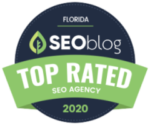WEBSITE DESIGN AGENCY
Web Design and Development Services
Boost Your Search Engine Presence with Our Custom SEO Strategy.
Search Engine Optimization (SEO)
Our web design agency offers a multitude of handy and important services to help improve your online visibility. These helpful packages are designed to increase your standing on specific search engines like Google, Yahoo, Bing, and others. SEO services cover everything from content analysis and keyword research to social media marketing and link building. Our company helps clients focus on delivering web design that matches their brand’s needs and incorporates it with ongoing SEO strategies as well.

Content Management System (CMS Design
With a CMS website, you can enjoy an intuitive layout, easy navigation, and enhanced functionality. Our web design agency makes it easy to maintain the aesthetics of your site by putting you in control of content changes and site updates. You’ll enjoy features like community forums, blogs, news feeds, e-commerce capabilities, and more. You’ll be able to add as many pages as you need without having to learn how to code or hire a web designer.

Conversion Rate Optimization
Our team optimizes your site speed so visitors can easily find what they need and become loyal customers. Our web design agency’s CRO services include website load speed, images optimization, and mobile-optimization. We help your site load faster overall so you gain more visibility to people searching online.

eCommerce Web Design
Our web design agency provides online store design for both large-scale shops and innovative startups. We offer e-commerce solutions designed for your specific business needs. You’ll obtain a fully functional shop with all of the features you need to run your business. Our web design agency integrates your inventory and marketing to maximize sales.

Shopify Web Design
Our web design agency partners with Shopify to provide this amazing e-commerce platform for the development of your website. Shopify can be used for online shops and online stores, providing easy-to-use tools, a way to design and manage your shop, as well as tools to manage logistics and order fulfillment. Your customers will enjoy being able to purchase products easily using their mobile devices or accessing affiliate programs on your site.

WordPress Website Design
Our web design agency partners with WordPress for the creation of quality websites. WordPress is easy to use, has a strong and growing community of users, and is highly customizable. This means that you’ll have a site that’s easily navigable, search engine optimized, and able to be updated frequently. Your site will be safe from data loss as well, so you don’t have to worry about your site’s integrity if you utilize online software like this one.

Pricing plans and options
Simple, flexible, and predictable pricing. Choose which package is best suited for you.
Need more? Let's get in touch!
Web Design Services Case Studies
When it comes to SEO and digital marketing, only results matter.
Check out real websites, projects and campaigns.
Keyword targeting
Massa eget egestas purus viverra accumsan in nisl. Ornare suspendisse sed nisi lacus sed.
Ranking protection
Massa eget egestas purus viverra accumsan in nisl. Ornare suspendisse sed nisi lacus sed.
Boost your sales, engage with customers, and create a Strong Digital Presence
SEO Expert Agency is known for its 360-degree marketing approach to put your brand in front of potential customers exactly when they need the products/services.
0 +
0 %
Why Choose an SEO Expert Agency As Your Trusted Website Design and Development Services Provider?
SEA is a website design and development company that has been in business for over 12 years and we would love to share the reasons why our team of experts should be your trusted choice for this type of service. We're an innovative and forward-thinking business who will work with you to deliver the best possible solution at a price that's affordable.
It is our mission to provide amazing customer service to make sure you are completely happy with your website project, which starts from when we first start designing your website until it goes live. We've been in business for over 12 years, so you can be confident that you are working with a company who knows what it takes to provide the best results, from start to finish.
When you work with us, it's not just a one-time deal, because we work with our clients long after the website has been completed. We have ongoing customer care services in place to help ensure that your website will continue running smoothly. This is an important consideration when choosing a web design company.
We have a strong focus on creating high-quality websites for our clients, which means we follow industry best practices for following best practices for accessibility. Your website will be completely ADA-compliant, as well as provide an optimal viewing experience across all devices. We also understand how important it is to ensure your website looks great on all platforms and isn't just a blob of text.

We love to help. Seriously.
Still not sure what you need? Give us a call. We’re happy to help, even if you’re not a customer. We're here 24/7/365. Call anytime. (704) 999-9050
Your Questions, Our Answers
A list of frequently asked questions to help you understand how it works.
1. How Long Does It Take To Get A Website Designed?
Writing a website design is not as easy as you may think. The process is not just limited to doing “research” on a few websites, which can easily lead to more confusion and mistakes. It is an extremely complicated matter, with many possibilities. There are multiple frameworks that need to be taken into consideration, along with different font choices among other factors, yet one should not get overwhelmed.
To get an idea of what is taken into consideration when designing a website, try to take a look at the following points:
- The design of the website should be consistent throughout. When designing your site, you are trying to create a “theme”. A theme is a combination of colors and objects used in conjunction with each other. For example, if you were trying to create a green and gray theme, the main font would be green and the font color would be gray while the background color would also be gray.
- The images used in your website should fit in with the theme. There are many websites that have a nice theme, yet an image of a house will be on their site. It just doesn’t fit.
- Keep in mind that you will want your visitors to come back to your site, so make it interesting, easy to navigate, pleasing to the eye, and not boring like a news story type of site.
- How much text is on your site? Less text is always better unless explaining all of the details of your products or services.
- Your website should have a strong call to action. Call to action means what exactly are you trying to get the visitor to do, such as purchase your product, take their survey, or just contact you for more information?
3. What is Responsive Website Design?
Responsive design is a web design approach aimed at crafting sites that deliver an optimal user interface (UI) experience when presented on various devices of different form factors. It aims to serve a website to the device rather than the other way around, thus becoming responsive from the start. The responsive website adapts itself to be displayed in either large desktop monitors or small hand-held devices (portable, mobile). It offers a seamless experience to the users, freeing them from having to zoom in or out of text and pictures.
This method allows you to control how a website will look on different devices. The design is fluid and changes in accordance with the size of the device’s browser window or screen. In this way, it enables you to make better use of space on your website and display neatly arranged content.
Responsive website design is the natural evolution of all website designs. The world has now moved on to mobile phones and tablets, which require websites with responsive functions. This allows you to make your website stand out because it will be displayed in a way that suits both desktop and mobile devices.
To have a responsive website, you have to ensure that your site optimizes its appearance as a result of the various devices used by different users. This responsive design will make it comfortable for the users to view your website on any device that they prefer.
5. How Often Should My Website be Updated?
Have you started an online business?
Are you wondering how often your website needs to be updated?
It’s a tough decision. You’re hoping that by maintaining an active site, people will continue to engage with your company even though things might be slow at the moment. On the other hand, if you update too often, it looks like your company isn’t doing well and can lead to lower customer engagement.
The truth is that creating a website is like a roller coaster ride. You don’t know where it’s going. You make decisions every step of the way and hope for the best.
When you create a website, it’s kind of like writing a novel. You don’t know what your story’s going to look like when you finish, and you can’t predict the reader’s reaction to particular parts or scenes. Your goal is to get them to care about what you say and do. You have to keep in mind that the writing process is usually a long one and you have to keep thinking about your readers as you write. Sure, sometimes on the day of publishing it’s easy to go with your gut and make some immediate decisions. But more often than not, you’ll wait until the very end and then figure out which way the whole story goes when all is said and done.
7. Advantages of Responsive Web Design
The rise in the popularity of mobile devices has, of course, been one of the biggest changes in all of the web design. With more and more users switching to mobile devices to browse websites, many have made the shift from desktop-only designs to responsive web design (RWD). Responsive web design is when a website automatically adjusts itself for different screen sizes at run-time. This has not just brought new functionality but also presented opportunities for businesses who want their brand’s message to reach an audience wherever that audience may be. There are many reasons why companies should choose RWD as a method of improving their online presence, with some of the biggest being cost-effectiveness and accessibility.
When producing a responsive website, developers will create a single page that can be displayed in myriad ways at run-time. This saves time by simplifying the development process, and money by requiring only one website to be made instead of more than one. Additionally, once the single web page is created it has to be maintained only once rather than several times.
BOOST SEARCH RANKINGS: Smashing Magazine, a company blog focusing on web design, created a “Responsive Web Design Revolution” guide that lists several ways to make your website more responsive. There are many factors that search engines consider when ranking websites, but one of the most important aspects they look at is the number of inbound links a site has. The more links, the higher the website ranks in search results. By having RWD enabled on your website, you allow other sites to link directly to specific pages.
IMPROVE BRAND REPUTATION: The perception of a brand goes beyond what is seen on its logo. People form opinions based on how it displays itself through sites. That being said, mobile users are increasingly accessing websites via mobile devices. Just as much as you want your website to be useful for your target audience, you also want it to be easy to use on a small screen or mobile device. Since there are many different types of screens, RWD makes it easier for users to find what they need.
REACH MORE CUSTOMERS: In the same way that search engines rank responsive websites higher, this also applies to social media sites. Many social media platforms are moving to a mobile-first world, making it easier for users to connect with companies on these portals.
PROMOTING YOUR BUSINESS: RWD allows you to show off your brand and what makes it unique. It will allow you to showcase your products and services in a way that customers can easily understand and connect with, which is why it should be a part of your marketing strategy.
DRIVE MORE CONVERSIONS: Not only do more users access the internet on mobile devices now, but they also do more on them. People will use mobile devices to check their emails, post to social media platforms, and even shop online. This means that responsive web design can play a role in making your website more engaging so that it drives customers through the conversion funnel.
RWD is affordable, effective, and easy to implement. You should not shy away from this method simply because of a potential learning curve or concern about creating multiple versions of your site.
9. Can You Help me Rank High in Google?
Yes, we can.
Search Engine Optimization (SEO) is a process that improves the number and ranking of a visitor’s search engine results. It does this by making adjustments to a web page’s content, design, structure, and other factors that affect how well it performs in search engine rankings. And when you’re trying to rank higher in Google because no one seems to be clicking on your site from the search engine results page, this can be frustrating.
Can we help you?
It’s actually pretty simple. We can take your website and make a few minor changes to make it more search engine friendly. So if you’re lacking conversions from your visitors, it’s probably because your site is not optimized properly. And since our team knows how to create the perfect website and brand, we can also improve your conversion rates.
What does this mean? It means that we can help you get higher rankings for keywords and phrases that are important for you to rank well for. And it means more traffic and more conversions.
2. How Do I Redesign My Existing Website?
When redesigning your website, it is important to remember that you are trying to make the user experience better for the people viewing your site. This means that you are trying to find ways to show your product or service in a way that draws your customers in and makes them want to purchase from you. By redesigning your website, you can improve on all of these things while making a stronger case for purchasing from you. A good way to start is with user experience designs. These can be used to create a site that is easier and more intuitive for customers to use, allowing them to quickly find the information they are looking for and easily purchase your product or service.
Use of UX patterns:
The first step, when redesigning your website, is to use user experience patterns. These are little things that you can do on a website that will improve the user experience; they do not require a redesign, but they make the website less difficult to use. Placing a link to your privacy policy at the top of your header is one of these; it makes it easier for customers to find what they are looking for and lets them know that you care about their privacy.
Page Layouts:
Page layouts are designed to inform users that they are on the right page. This is especially important because many customers will come directly from Google and may not understand where they are or what page they have arrived on. By placing the “homepage” link at the top of your page, you are letting customers know how to get back to your homepage.
Site navigation:
Site navigation is another way you can improve your user experience. This can be something as simple as giving visitors a clear path from one page to the next by using several visual cues or using headers that indicate what pages they are on. This informs the customer that they are on the right page, but it also indicates what other pages they can get to by clicking on any of those links.
Emphasize keywords in content & navigation:
You also want to highlight any keywords or phrases in your content and/or site navigation so that customers will click on them when they are looking for products or services related to those keywords. By including keywords in your content, you can bring people back to your site by giving them a reason to buy what you sell.
4. What is SEO-FRIENDLY Web Design?
A simple definition of SEO-friendly web design is designing a website and its content in such a way that it can rank high on Google and other search engines. A good practice for any web designer.
SEO-friendly web design means building sites with the intention of attracting both human and machine visitors, with content that is easy to find, read, and link to — as well as targeting the most popular keywords.
SEO-friendly web design is about creating a site design that appeals to humans, search engines, and both. The site must be easily findable by human visitors as well as search engines. Content that is relevant and useful to human readers should present in a way that helps the web page rank high on Google based on those keywords.
SEO-friendly web design involves several important elements such as:
A title tag: A title tag will help in delivering information about your site. The tag includes important keywords and is visible in search results.
A title tag will help in delivering information about your site. The tag includes important keywords and is visible in search results. A page title: It is better to have a page title that has more relevant keywords than one with less relevant keywords.
It is better to have a page title that has more relevant keywords than one with less relevant keywords. Links: Links are important, especially on a blog. Use keywords within the links and make sure that they are relevant to the post.
Links are important, especially on a blog. Use keywords within the links and make sure that they are relevant to the post. Keywords: The search engine software learns by analyzing data of your site and gives a higher ranking to those sites which have better content in specific areas. Add quality keywords to your pages to help increase these ranking factors.
The search engine software learns by analyzing data of your site and gives a higher ranking to those sites which have better content in specific areas. Add quality keywords to your pages to help increase these ranking factors. Content: Creating long-form content is important for SEO. However, it is not the only thing that counts. The content must be relevant, presentable, and easily readable to the average visitor and search engine alike.
6. How Responsive Web Design Improves User Experience
Responsive web design is the best thing to happen to the Internet. With it, websites are easier for users to navigate and smaller in size, all while providing a seamless experience on any device. You can read more about how responsive web design improves user experiences in this blog post!
If you want your website or blog to be viewed on as many different devices as possible, you’ll want to make sure you’re using responsive web design.
Responsive web design is a versatile and helpful technique that allows websites to adapt to anything from mobile phones and tablets to desktop computers. By providing a better user experience, responsive design can help your site get more visitors and lead you to a bigger audience of potential customers.
The philosophy behind responsive web design
How do you know if your website is responding well? Well, the best way to decide if it’s responsive is to try it out on one of the many different devices that are out there. Go to a friend’s house, pull out a smartphone or tablet, and try to navigate through the website . . . if the experience is smooth and stress-free, then you’ve got responsive web design down.
To create an effective website, your team will need to know where it needs to be placed in order for visitors to understand and connect with what you’re offering. One of the best ways to do this is by using analytics, which can help you see what people want and need from your website. If a visitor can’t find what they’re looking for, or if they get frustrated trying to navigate your website, then you won’t get any return business.
8. Why Your Business Needs Responsive Web Design
A responsive website design is a crucial tool for any business these days. A responsive website can be translated to work on any device, from a desktop computer to a tablet, and even a phone. We look at some of the top reasons why you need a responsive web design for your business.
“A responsive website is a website that looks good and works well regardless of the screen size or device that the users are using. For example, a tablet computer and a desktop computer both have screens with similar dimensions. The same is true of mobile phones and other handheld devices.” (Sam Stokes)
What exactly is responsive web design?
The term “responsive web design” aims to improve the experience for smartphone users who use websites on their mobile devices. A responsive website will adjust its layout to suit the device which is viewing it, looking, and operating as well as it can in any browser.
Another key benefit of responsive web design is that it can be used on any personal computer on any operating system. When you have a website built on a template, by using responsive web design you will make the website more accessible to users who are visiting your website using different hardware and software. A responsive website will display correctly no matter if they are using Internet Explorer or Firefox, a Mac, or a PC.
“The responsive web design process enables users to browse your website on larger screens and still retain the precise look and feel of the content.” (Sam Stokes)
10. Do You Redesign Existing Websites?
We certainly can do that! All you need to do is send us some links to sites similar to what you’ve designed and we’ll be able to provide you with an accurate quote. We can also help with social media design, logos, and branding.
We’ve helped clients with redesigns before, so if that’s something that interests you please don’t hesitate to contact us! One of our designers will get back in touch with you as soon as possible.
Our project manager is still available for any questions or inquiries about the design process or pricing.










